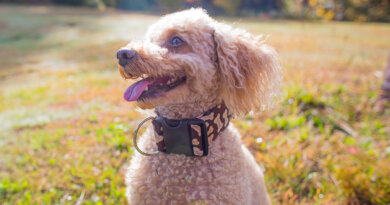dunking birds, a hole in the sun and lack of emoji biodiversity : NPR
NPR’s Juana Summers talks with Regina Barber and Viet Le of Short Wave about parrots dunking food in water, a giant hole in the sun and the lifeforms neglected by emoji makers.
JUANA SUMMERS, HOST:
It’s time now for our regular science news roundup with our friends at NPR Short Wave podcast, Regina Barber and Viet Le. Hi, all.
REGINA BARBER, BYLINE: Hey.
VIET LE, BYLINE: Hi.
SUMMERS: So how this works is you have brought us three science stories that caught your attention this week. So what are they?
LE: How about a study about the lack of biodiversity in emojis?
SUMMERS: OK. But I have to tell you I do love a good penguin emoji.
BARBER: I mean, I love the penguins, too.
LE: Me too.
BARBER: And we also have a story about a group of fancy parrots that learned to dunk their food before they eat it.
LE: And a hole in the sun that’s the length of 60 Earths.
SUMMERS: OK, OK. Pause, please.
BARBER: (Laughter).
SUMMERS: There is a huge hole on the sun? What is going on here?
LE: Yeah. So this is pretty big. Like we said, it’s longer than 60 Earths. But it’s funny, you can’t see it with your naked eye.
SUMMERS: You should not do that. Please do not look at the sun.
BARBER: Don’t look at the sun.
LE: Right. Correct. Don’t – please don’t. And even with a special solar telescope or those solar glasses people wear during a solar eclipse, you actually wouldn’t see this hole.
BARBER: Yeah, because this coronal hole – that’s the technical name – is visible in the extreme ultraviolet and some X-ray parts of the light spectrum.
LE: And that part of the light spectrum, it shows up as a big dark area.
SUMMERS: OK. This is kind of scaring me, but you both seem really calm. Is this normal?
(LAUGHTER)
BARBER: Yeah. I mean, these coronal holes do happen, like, a fair amount. And they can sometimes cause problems for us because of how they interact with solar winds. So solar winds are made up of magnetic fields and charged particles that come off the sun’s corona. And solar winds are being constantly emitted from the sun. And they’re less contained at these coronal holes because these coronal holes are less dense and the magnetic field is, like, weaker there.
LE: So in the area of these coronal holes, where the magnetic field is weaker, the solar winds can escape at much higher speeds. These winds can give Earth its beautiful auroras but can also disrupt satellite communications if they are intense.
SUMMERS: Interrupt satellites – y’all, I am concerned again. Please help.
BARBER: Well, don’t be worried about this one. This one’s not going to do very much. I talked to Lisa Upton about this. She’s a solar physicist at Southwest Research Institute. And she says that if you kind of relate the solar wind to kind of rain on Earth, then this hole just makes that rain a little bit more intense.
LISA UPTON: It’s more like, you know, a heavier downpour of rain than, for instance, a hurricane, a coronal mass ejection where you’re sending a lot of mass and particles at the Earth.
LE: Also, the sun is being constantly monitored by an orbiting solar observatory just in case there is something that would be actually worrisome. And for those out there who want to look at this hole, check out the website for NASA’s Solar Dynamics Observatory.
BARBER: So, like, all in all, this is, like, a flashy headline that maybe some people have seen, but it doesn’t really affect your everyday life.
SUMMERS: OK. That is good to know. So this next story, it’s about parrots who like to dunk their food before they eat it?
BARBER: Right. So we’re talking specifically about Goffin’s cockatoos. They are these white-colored parrots. And in the wild, you can find them in places like Indonesia and Singapore. But the ones in this study live in an aviary at the Messerli Research Institute in Austria.
LE: Yeah. I spoke with Jeroen Zewald, a co-author on this new paper in the journal Biology Letters. And he says one day in the lab, they saw a cockatoo take its food – mostly rusk, which is this really hard, dry toast – and dunk it in the water before eating it – something they hadn’t seen before.
JEROEN ZEWALD: We saw it in one individual and we’re like, huh. That’s interesting. Is this accidental or – well, let’s keep an eye on it. And, like, not even five minutes later, we saw another one doing it as well.
BARBER: And then a third. So they decided to start watching the birds for this, like, food-dunking behavior. And by the end of the observation period, seven of the 18 had dunked.
SUMMERS: So I take it then that food dunking is unusual in birds?
BARBER: Well, actually, food dunking has been observed in other bird species. If you have a pet parrot at home, you actually may have seen them dunk their food. But we also don’t really know why these cockatoos are doing it. So that’s what the study was, in part, trying to figure out.
SUMMERS: Well, I don’t have a pet bird at home, but I do know that there are some people out there who like to dunk their chocolate chip cookies in milk because they think it’s tastier. I don’t agree, but OK. Do cockatoos do this because they think it’s yummier?
LE: Sadly, they ruled that out because the cockatoos are using fresh water to dunk, so it really wouldn’t affect the taste. Our researchers believe the more likely reason – and this is maybe not a total surprise – dunking softens the food. But Zewald says they’re still not sure if it’s to improve the texture of the food, to help them digest it, or maybe both.
BARBER: Still, he says, this is an exciting result because only some of the cockatoos did this, and we haven’t seen this behavior in this species in the wild. The researchers write they believe this food dunking is a spontaneous foraging innovation by one or more of their cockatoos.
SUMMERS: Those sound like some smart birds. OK. Finally, our last topic – the lack of biodiversity in our emojis.
LE: Yes. Juana, I’m not sure if you’re a big emoji user.
SUMMERS: Well, my group chat certainly is.
BARBER: (Laughter).
LE: Well, next time you think to use an emoji, take a close look at your animal and nature emoji options because a team of conservation biologists from Italy did just that, and they found that emoji are unrepresentative of the actual biodiversity that exists in nature. So, for instance, a lot of cat and dog emojis. For fungi, though – and there are a lot of species of fungus out there in the world – you have one emoji.
SUMMERS: Sad face emoji. How’d they figure this out?
BARBER: Yeah. So this was written all up in a study that came out this week in the journal iScience. And the researchers went to Emojipedia, an emoji reference site, and categorized all the emojis that are related to nature and animals. And they identified things like 92 animals, 16 plants and one fungus.
LE: And when you compare these numbers to the proportion of species scientists have actually identified, they found that while animals are well represented in the emoji catalog, plants, fungi and microorganisms were underrepresented.
SUMMERS: So what I’m hearing is one mushroom emoji is, perhaps, not enough.
BARBER: Well, according to these researchers, it’s not enough. And looking at just the animal emojis, about 75% represented vertebrates – so animals with backbones. A much smaller percentage of these animal emojis were arthropods, which include insects and crustaceans.
LE: But in the real world, the actual proportions are the other way around. There are over a million known species of arthropod, whereas known species of vertebrate are somewhere in the tens of thousands.
SUMMERS: OK. All jokes aside here…
BARBER: (Laughter).
SUMMERS: …Does it really matter if I only have one fungus emoji to text all my friends?
BARBER: Well, I mean, this study argues that a more representative set of nature and animal emojis could be a powerful tool for raising awareness and communicating about biodiversity, especially if you’re trying to reach diverse audiences.
LE: Although I, and perhaps others, may be a little overwhelmed by all of that and just stick to my thumbs up and smiley face emojis.
SUMMERS: And me, I will stick with my penguins.
(LAUGHTER)
SUMMERS: Regina, Viet, thanks so much.
BARBER: Thank you, Juana.
LE: Thank you.
SUMMERS: That is Regina Barber and Viet Le from NPR’s science podcast Short Wave, where you can learn about new discoveries, everyday mysteries and the science behind the headlines.
(SOUNDBITE OF JOJI SONG, “GLIMPSE OF US”)
Copyright © 2023 NPR. All rights reserved. Visit our website terms of use and permissions pages at www.npr.org for further information.
NPR transcripts are created on a rush deadline by an NPR contractor. This text may not be in its final form and may be updated or revised in the future. Accuracy and availability may vary. The authoritative record of NPR’s programming is the audio record.




